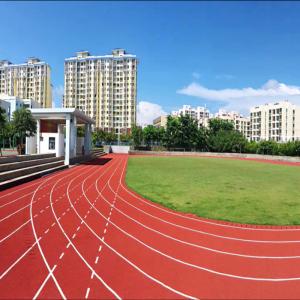
Add to Cart
Running tracks are specialized surfaces designed for athletic activities, primarily running. They provide a safe and supportive environment for athletes to train, compete, and improve their performance. Running tracks are commonly found in stadiums, schools, sports complexes, and fitness facilities.
Key Features of Running Tracks:
Surface Material: Running tracks are typically made of synthetic materials such as polyurethane (PU) or rubber. These materials offer excellent shock absorption, traction, and durability.
Shock Absorption: The surface of a running track is designed to absorb impact and reduce the strain on athletes' joints and muscles. This helps minimize the risk of injuries and promotes efficient running form.
Traction: Running tracks provide excellent traction, allowing athletes to push off the surface and maintain stability during sprints and turns. The texture of the track surface is optimized to offer a balance between grip and energy return.
Safety and Comfort: The cushioned surface of running tracks offers a comfortable running experience and reduces the risk of stress-related injuries. The consistent and uniform surface avoids irregularities that could cause tripping or stumbling.
All-Weather Performance: High-quality running tracks are designed to withstand various weather conditions, including rain, heat, and cold. They maintain their performance and integrity, ensuring consistent running conditions year-round.
| Name | synthetic running track |
| Thickness | 13mm ( 10mm bottom layer +3mm top layer |
| Material | SBR rubber for bottom layer, EPDM rubber for top layer, mixing with PU binder |
| Structure | concret foundation+elastic layer+surface layer+line marking |
| Certificate | WA, IAAF, REACH |
| Life time | 8-10 years |




